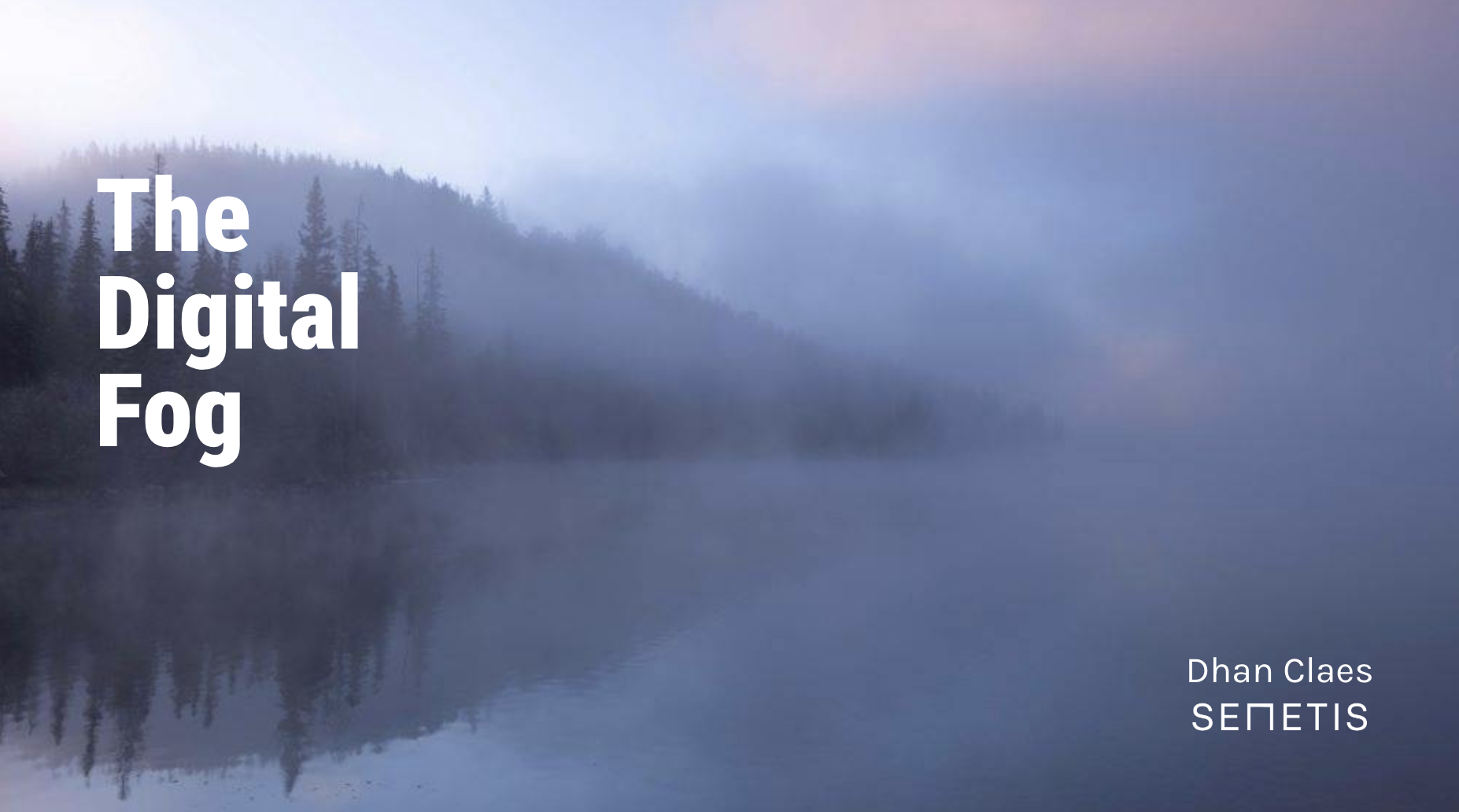

For people who don’t know Semetis. We are Belgian’s leading digital media agency. For people who don’t know me. I like to push boundaries both in my professional life and in my personal life. I’m a multiple Ironman finisher. And for a year now, I went from Ironmans to ironing baby clothes. Just like brands have to adapt to a new reality. I’m adapting my way of training by bringing my son Fox along with me.

I’m really grateful to everyone here who sacrificed their lunch to sit in this room with me. So, let me start by making it worth your while—and sharing an ugly truth. Semetis is the leading digital media agency in Belgium, and yes, we’re incredibly proud of that. But there’s something I’ve been obsessing over lately.
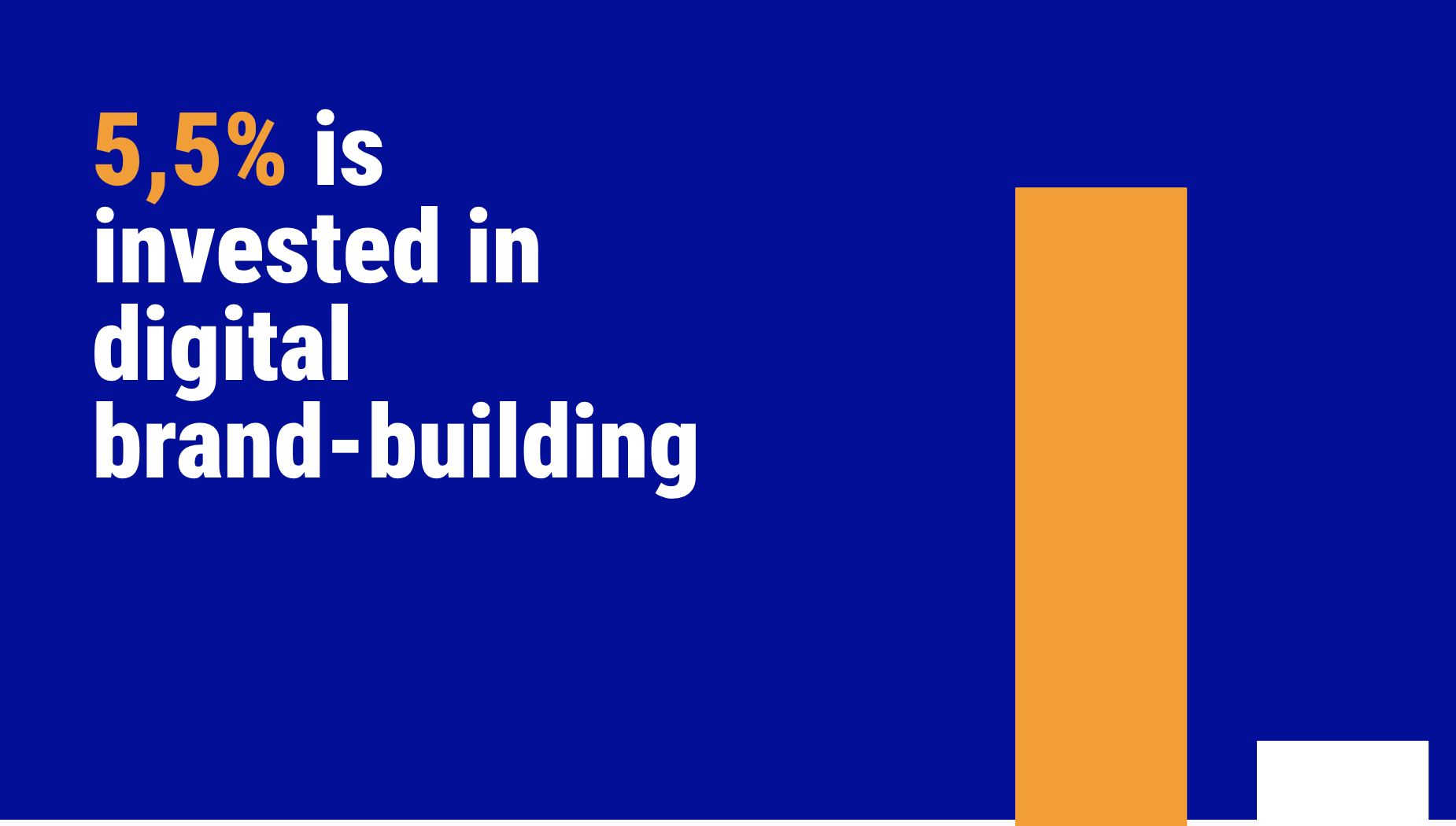
Would it shock you to hear that out of the millions we manage in digital media every year, only 5,5% is actually invested in pure brand-building? That’s it.

So where is the money going?

Advertisers still lean heavily on television for their brand-building campaigns, and honestly, that makes sense. It’s the gold standard for long-term impact—reaching wide audiences, creating emotional resonance, and delivering consistent results over time.

But here’s the catch:
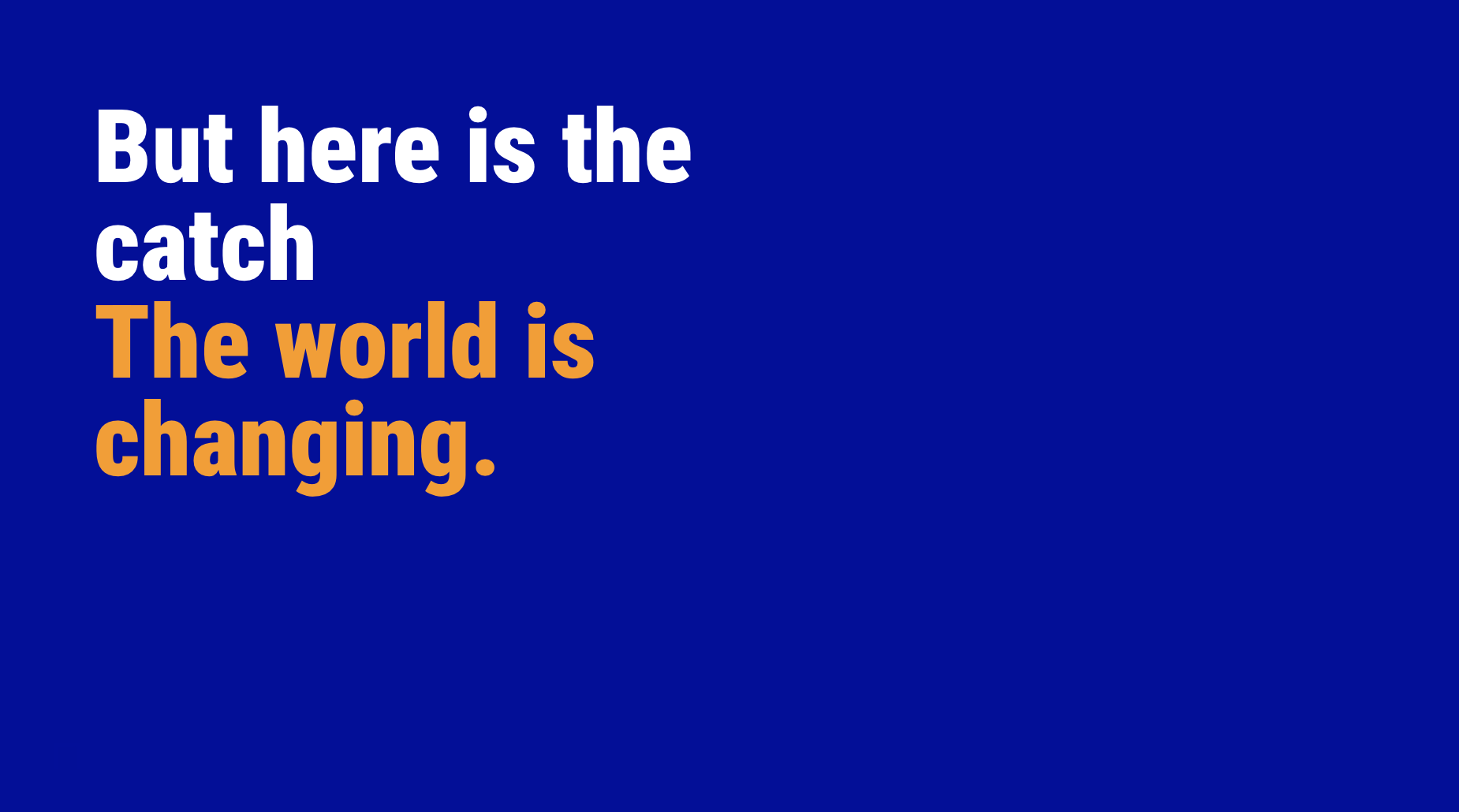
the world is changing.

And fast.

Take Flanders, for example. De Tijd reported last week that by 2029, 600,000 people in Flanders are expected to have cut the cord, abandoning traditional TV entirely in favor of streaming platforms like Netflix and co.

And I’m already seeing this play out with one of our clients at Semetis. It’s an incredibly well-known brand—a household name that most people immediately think of in its category. You’ve probably heard their jingle at least a dozen times—it’s one of those that sticks in your head.

For over a decade, they’ve proudly held a Top-of-Mindness (TOM) score of 82%. They’re the go-to in their field, trusted and recognized by almost everyone. They’ve kept their GRP investments steady year after year, ensuring their campaigns are visible across Belgium. But here’s the problem: their TOM score has been slowly dropping. Today, it’s sitting at 76%, and it’s still declining.

For me, the conclusion is clear: while their GRP levels haven’t changed,

their audience has. And we know where that audience is spending their time.

What scares me most is that we’re not truly tapping into the digital potential for brand-building.

Somewhere along the way, digital got boxed into being a performance-only playground.

So here’s the big question: why aren’t we leveraging digital to build brands?

When digital marketing first emerged, it came with a bold promise: complete accountability.

Digital promised a world where we could measure everything—a world where social media insights and database tracking could reliably predict business outcomes. This made marketers feel in control, and able to justify each budget decision with data. Digital seemed like the answer, allowing brands to finally “see” where their money was working.

We all thought digital marketers had cracked the code - the “motherlode” cheat code from the Sims. They positioned themselves as the new kids on the block, the ones who had figured it all out.

They were selling the digital dream.

They gave you no reason to not completely shift spending from brand building to performance marketing channels. To be clear, I was one of them.

Little did we know, we were wrong.
But we weren’t challenged. Why? Because the CMOs loved buying into the dream too.

Because the CMOs loved buying into the dream too. With an average tenure of just 3.3 years

long-term thinking wasn’t exactly a priority. For them, it wasn’t about building a legacy—it was about delivering quick wins. And in a world of short-termism, performance marketing looked like the perfect solution.

The Digital Dream is in fact an attribution nightmare

Let’s start with the big villain: attribution models. We’ve treated them like the holy grail of measurement, but they’re more like a funhouse mirror—showing us a distorted version of reality. You need to watch out for these. It should be widely accepted that attribution tracking is only a half-truth.

Many sales attributed to digital channels are simply capturing people who were already on their way to purchase. Real incremental growth—the kind that builds brands over time—often happens well after initial exposure to a brand.

In fact, some sales can take up to three years to materialize.

But here’s the problem: digital tracking tools like cookies only last about seven days. This short lifespan means we’re only able to track a tiny portion of the customer journey, and we miss the long-term impact that brand-building has on eventual sales. So, while attribution models might give credit to a recent click or ad, they’re unable to capture the full picture of how brand-building activities contribute to sales over time

Studies comparing digital attribution to econometrics tell us how wrong we’ve been:
- Direct response channels like search are over-attributed by a factor of 2, while brand-building channels like TV are underestimated by a factor of 7.
- Even email campaigns overestimate their impact by 60%.

This isn’t a small miscalculation—it’s massive.

According to Les Binet, even multi-attribution models are so flawed that they’ve driven the massive shift toward response ads. Even Google and Meta admit that they can’t accurately measure incrementality or long-term impact.

So, if the giants of digital marketing are telling us that attribution models don’t work, why are we still clinging to them?


Here’s another illusion: the idea that first-party data is the key to growth.

It’s not.
We like to think that targeting “hot prospects” in our digital databases is where growth comes from. But let’s be real—these are people we already know, the low-hanging fruit.

Real brand growth comes from reaching light and non-buyers, the ones who aren’t on your radar.
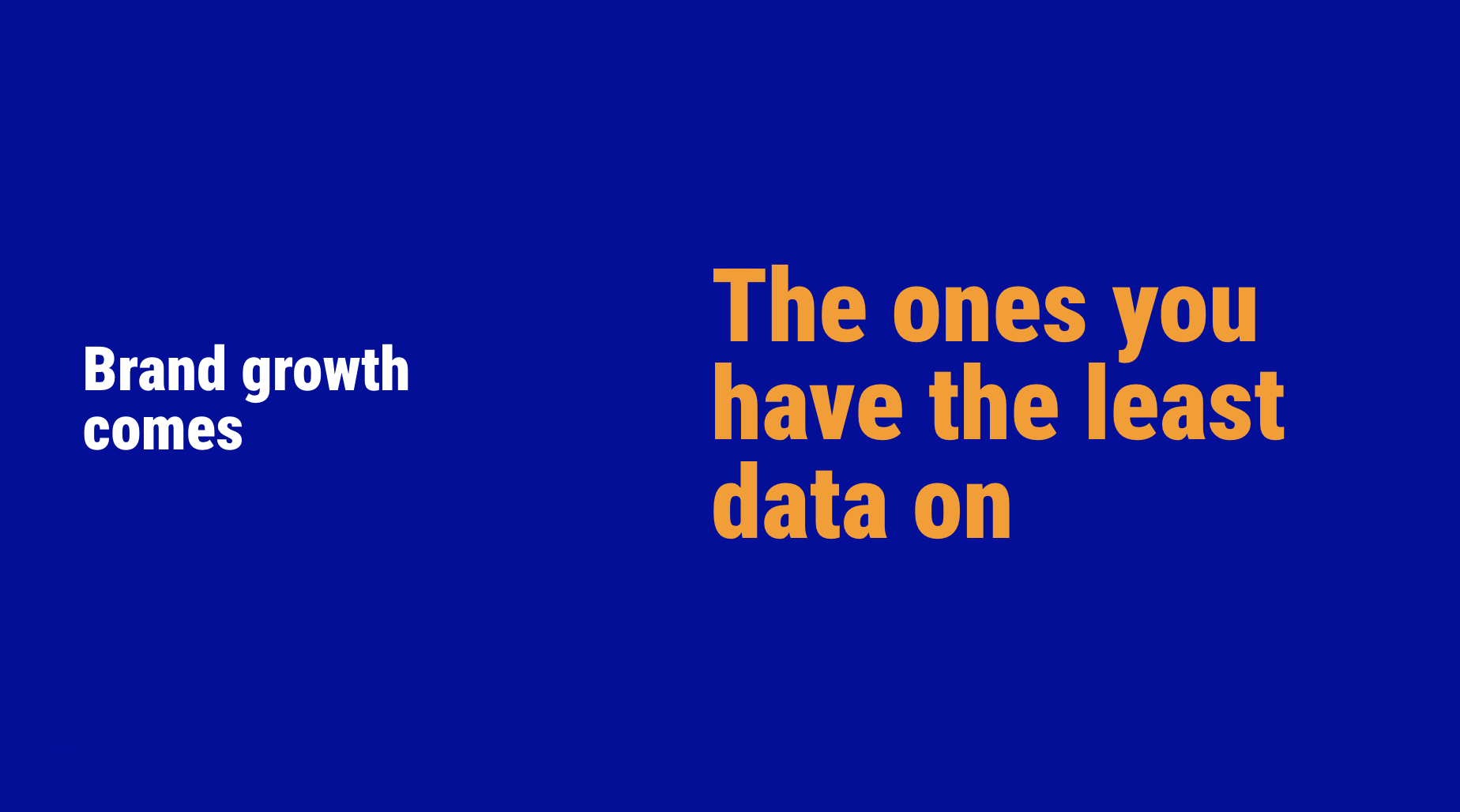
But these broader audiences are precisely the ones we have the least data on.
So while first-party data might feel precise, it’s not scalable. We’re spending all our time and budget retargeting the same people, instead of casting a wider net to drive incremental growth. It’s like mining the same patch of ground over and over, hoping there’s more gold—it’s not there.

This might sound obvious, but here’s why it matters: we spend so much time hyper-targeting these segments that we’re forgetting to reach beyond them. In-market audiences often feel like they’re well-defined and predictable, but in reality, they’re not. Hyper-targeting feels efficient, but it limits your potential. Growth doesn’t come from targeting people who are already in market for your product. You’re missing the bigger picture.

Let me make this one clear: social media isn’t real life.
We treat social media like it’s a mirror of people’s true behavior, but it’s not. It’s a stage. People “like” and “share” to show off, not because it reflects their actual intent to buy.

Take Gen Z, for example. The sustainability paradox is real. Recent studies show a significant gap between their expressed concerns about sustainability (63% of Gen Z) and their actual purchasing behavior. They make posts about reducing waste go viral.
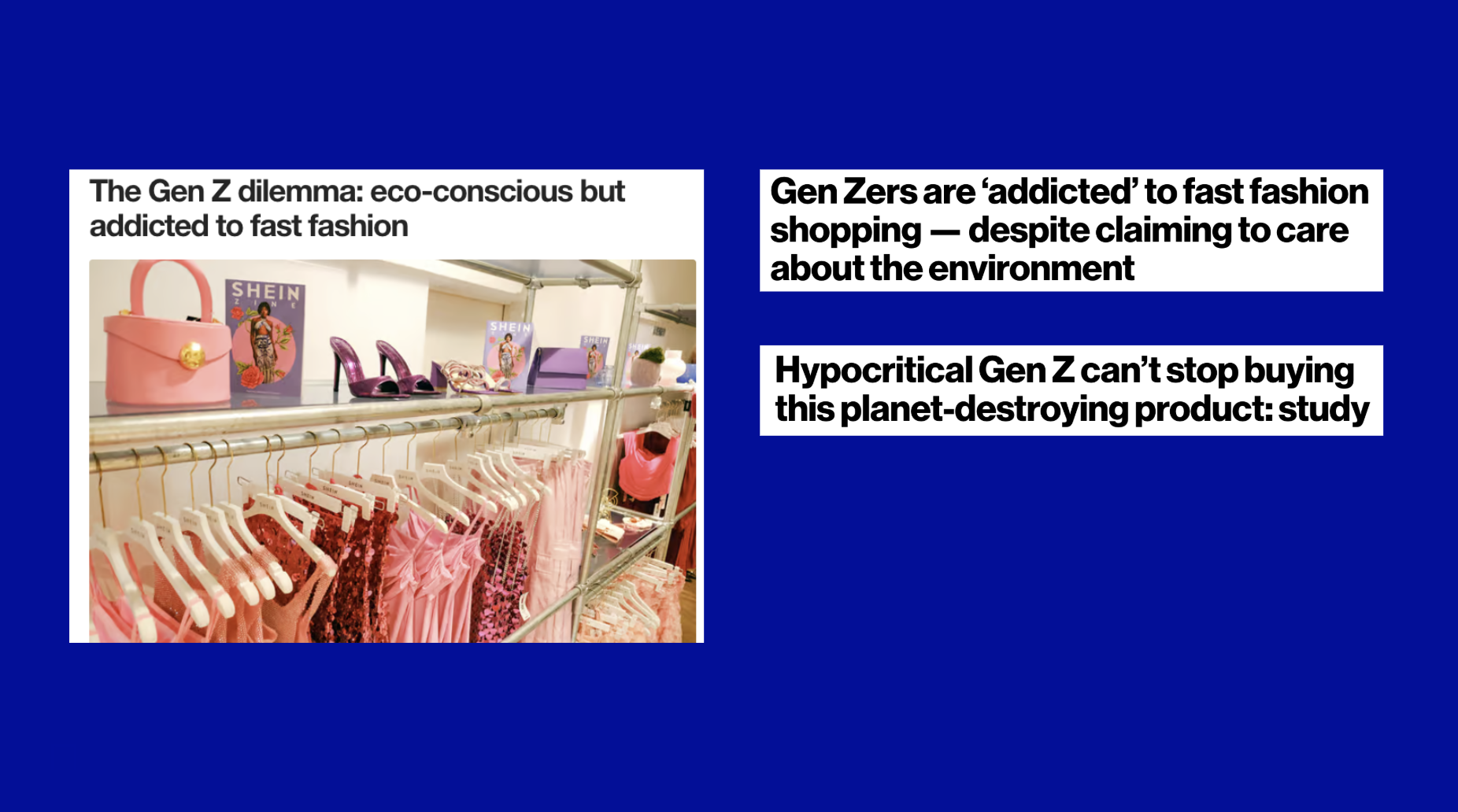
Yet, the hypocritical Gen Z is the main growth driver of fast fashion giants like Shein and Temu. Their online engagement signals one thing, but their wallets tell a completely different story.

Trying to connect social media engagement to business outcomes is like trying to read a play and assume it’s a documentary. It’s surface-level and, frankly, misleading. Engagement metrics might look nice on a dashboard, but they’re not telling you anything meaningful about what people actually want.

The promise of digital was precision, control, and accountability. But instead, we’ve handed over control to the platforms. We’ve become completely reliant on algorithms to power our performance marketing—whether it’s SEO, SEA, or social media ads. And here’s the problem: a single tweak to an algorithm can throw your entire strategy into chaos.

Let me share another example from Semetis. We work with a client in the mortgage industry, a highly competitive sector where most business comes through search. Mortgages are one of the most heavily searched products online, and for this client, 90% of their budget was invested in Google Ads to capture those leads. It was a sound strategy—Google Ads consistently delivered the performance they needed.
But then, Google made a small adjustment to its Ads algorithm, and suddenly, their cost-per-click skyrocketed. Overnight, their campaign performance plummeted—not because their strategy was flawed, but because the rules of the game had changed.

This dependency isn’t just risky—it’s short-sighted. Algorithms are optimized for short-term metrics like clicks and conversions

because that’s what platforms profit from.

The worst part? By playing the algorithm’s game, we risk commoditizing our brands. If everyone is optimizing for the same metrics, what makes your brand stand out? Creativity and strategy take a back seat. The digital dream promised us freedom and precision, but algorithm dependency has delivered the opposite. We’re not driving the car—we’re just along for the ride, and the platforms are the ones in control.

The worst part? By playing the algorithm’s game, we risk commoditizing our brands. If everyone is optimizing for the same metrics, what makes your brand stand out? Creativity and strategy take a back seat. The digital dream promised us freedom and precision, but algorithm dependency has delivered the opposite. We’re not driving the car—we’re just along for the ride, and the platforms are the ones in control.

So, Dhan, you’re saying that brand-building media are dying and that the digital dream is still very much… a dream?

Don’t panic.

Here’s the good news:

you can use digital as a brand-building medium. The digital dream is very much alive—if you get the mix right. That’s the secret: finding the right balance between performance and brand-building on digital channels.
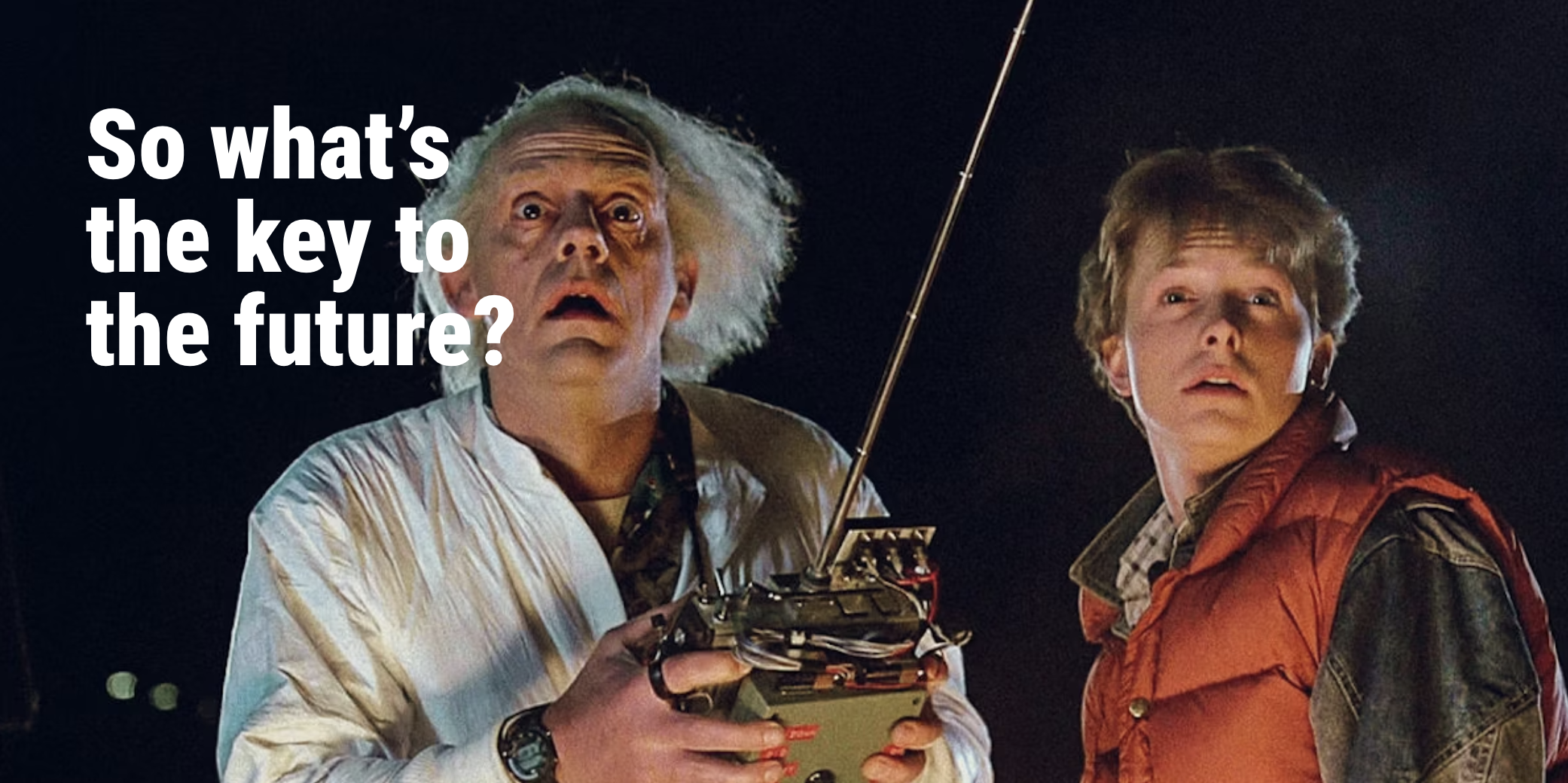
So what’s the key to the future?

These two should start to make babies.
So what’s the key to the future? It’s about learning how to effectively build your brand online. Think of it like the old-school CMO and the digital marketer coming together to create the perfect love child. Before 2000, the old-school CMO mastered panel-driven research and focused heavily on branding. They understood the fundamentals of building emotional connections and creating mental availability. The truth is, we know how to do this—we just need to apply it to digital.

Now, I’m not claiming to have all the answers, but based on our experience, here’s a framework to start with.

Media & creative, both have an equal share to create great brands online.
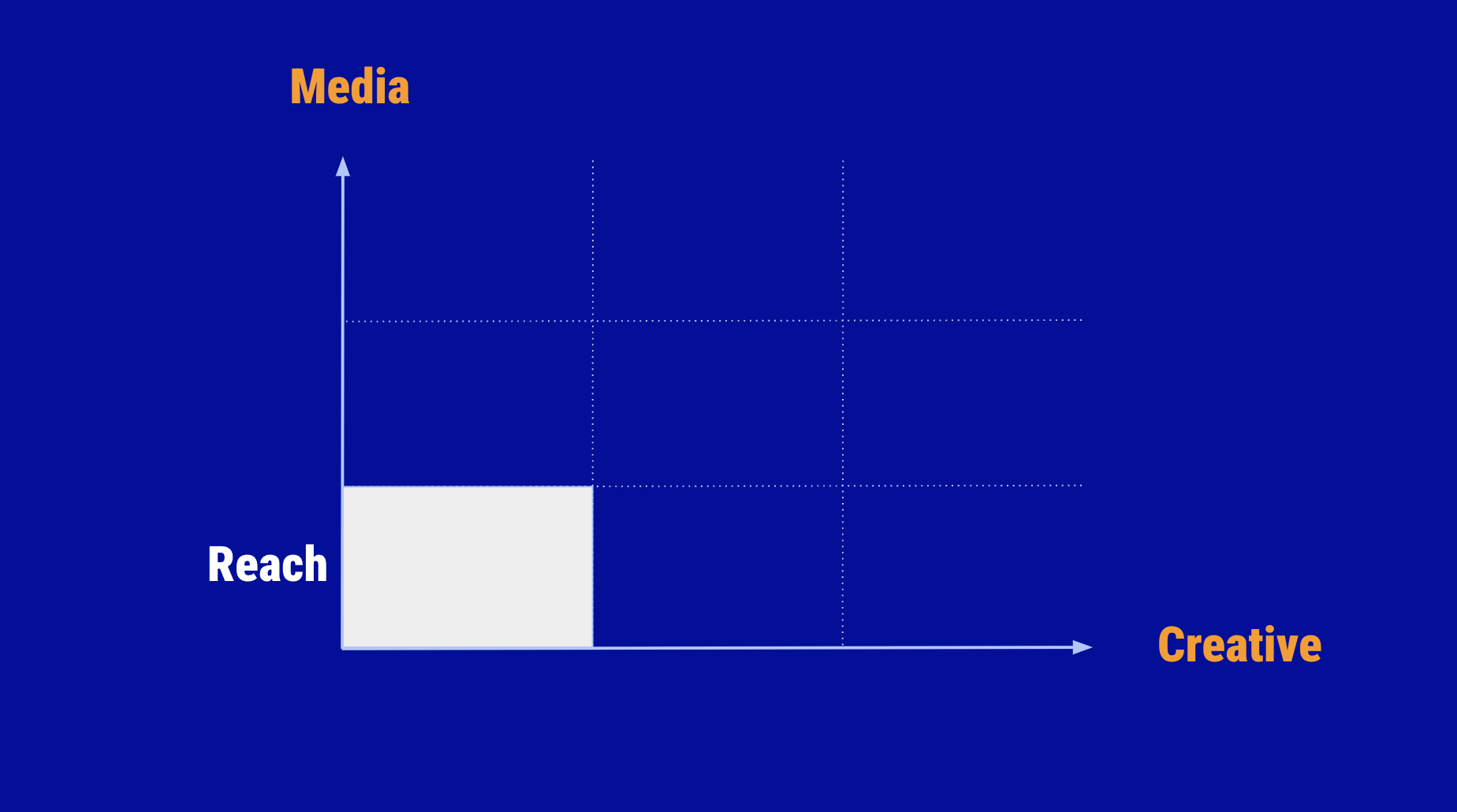
Let’s start with media: reach

If growth comes from increasing your penetration, the biggest driver of effectiveness is simply managing to reach more people. Put simply, you need to reach as many potential buyers as you can—without worrying if they are light, heavy, or non-buyers.
Many brands focus on refining their targeting on digital platforms, narrowing their audience to a razor-sharp precision. But here’s the thing: this is a mistake for brand-building campaigns. Laser-tight targeting may look efficient, but it severely limits reach—and reach is the foundation of growth.
The solution is simple: go as broad as you can afford. If you’re not reaching people who have never heard of you, you’re not growing.

And by “broad,” we mean channels capable of delivering impressions to at least 50% of your target market.

For digital, this means leaning into channels like BVOD, YouTube, and other online video platforms that can provide massive reach at scale.

Get fit for platform

Once you’ve achieved broad reach, the next step is platform fit. This is all about respecting the unique dynamics of each digital platform. Why are people there? What kind of content resonates? What’s the context surrounding your ad?

Take YouTube, for example. Using its native “story arc” format has proven to make ads twice as likely to perform well compared to traditional TV formats.

But here’s the kicker: if you manage to get platform fit right, you’re already outperforming 90% of ads on that specific channel.

And your brand’s long-term contribution will increase by 17%. Most brands don’t bother tailoring their ads to fit the platform. They repurpose TV spots for digital, or worse, they try to make one ad work across every platform. This is a huge mistake. A TikTok ad should feel native to TikTok. A YouTube ad should feel native to YouTube. The more your ad blends seamlessly with the platform’s environment, the better it will perform. Fit matters, and it matters a lot.

Frequency is your lifeline
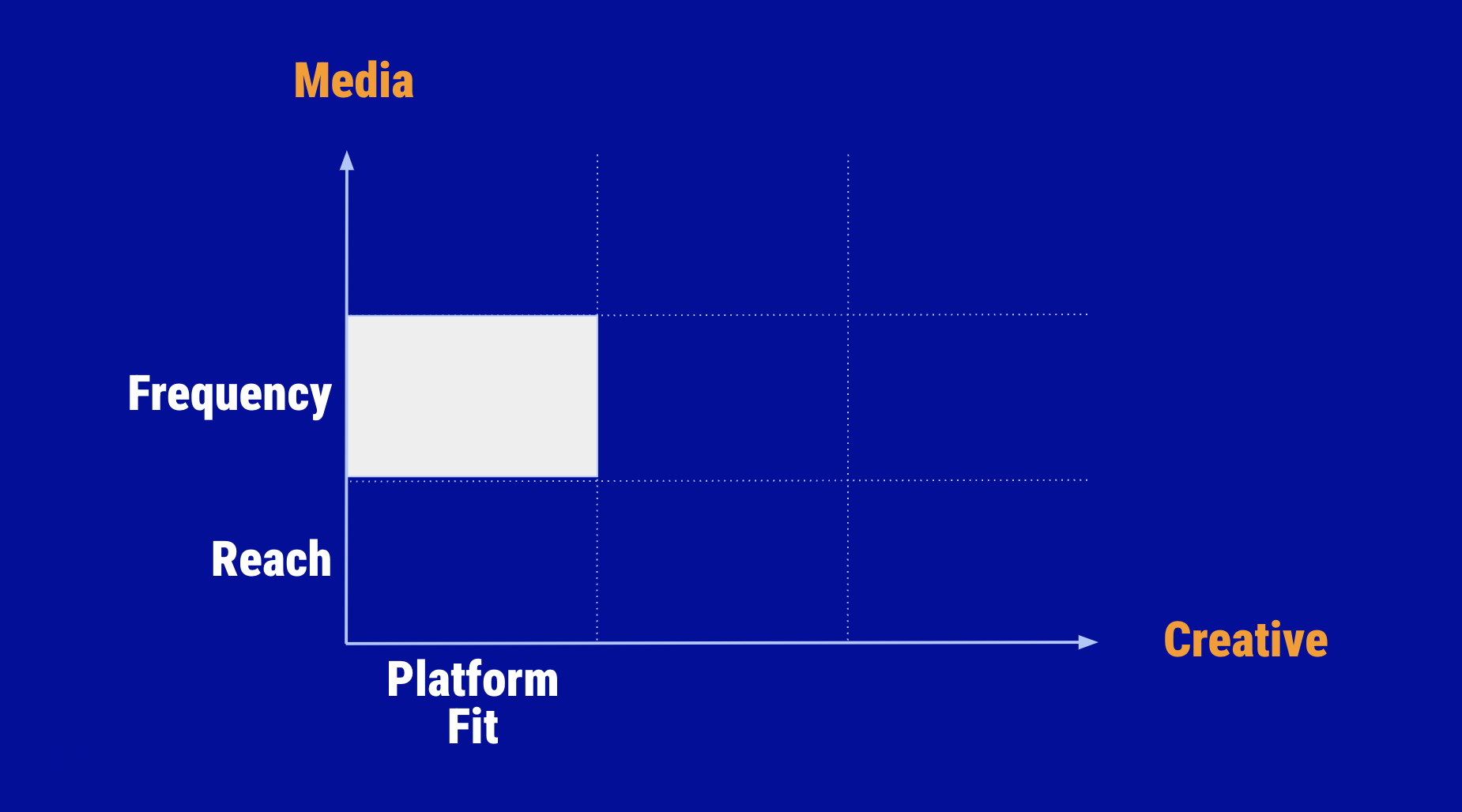

frequency is often underestimated,

and that’s a big problem.

Here’s why: digital impressions are cheap, but they’re cheap for a reason. The default attention span on most digital platforms is tiny, and the majority of impressions are low impact.

Remember, you need to hold someone’s attention for at least 2.5 seconds to have any chance of influencing memory or building mental availability.

The reality? 85% of digital ads fail to meet this threshold. Platforms with heavy user interface choices make it even harder to hold attention.

And we know brand-building isn’t a one-and-done job—it’s about continually reinforcing memory structures over time. This means that frequency is absolutely essential on digital platforms.

If you want to break through and make an impact, you need to reach your audience repeatedly. For effective brand-building, we recommend aiming to hit your audience 1-2 times a week. This consistent exposure helps overcome the low-attention environment of digital and ensures that your message is actually absorbed.
In a world where attention is fragmented and fleeting, frequency isn’t optional—it’s your lifeline.

As a young parent I’m being faced daily with how effective I am in raising my one-year-old, and being consistent is non-negotiable.

The same counts for the brand-effectiveness outcome. I’m talking about your distinctive brand assets that have to come into play—your logo, colors, tagline, or even your jingle.

Take Proximus as an example. They created a creative platform from their unique insight and stayed with it for multiple years. Through their consistent and focused campaign claiming "fiber," they successfully linked their brand to this concept in the minds of consumers. Now, when people think of fiber, they think of Proximus—and vice versa.

Maintaining consistent branding isn’t just “nice to have.” It’s essential for building mental availability and fostering those mental shortcuts. Studies show that brands with a TOM score above 60% can reduce the number of touchpoints needed to create memory retention by 50%.
Here’s the breakdown:
- TOM < 30%: 10-12 exposures needed.
- 30% < TOM < 60%: 7-9 exposures needed.
- TOM > 60%: 5-7 exposures needed.
So, if your branding is inconsistent or forgettable, you’re doubling the work—and doubling the cost.

So, if your branding is inconsistent or forgettable, you’re doubling the work—and doubling the cost.

Basically, make sure the creative has some of that right-brain magic.


Great creative is still the most effective way to build brand connections. Studies reveal that elements like human interaction, narrative, catchy tunes, and who still remembers de “tovergroentjes van Delhaize”?

Les Binet and Peter Field’s research shows that emotionally engaging ads are 2-3 times more effective at driving profit growth than rational ads. Emotional ads build fame. They make you laugh, cry, feel something. This isn’t fluff—it’s science.

Attention is the real currency
Now comes the final challenge: attention.

In a digital world where attention is massively fragmented, understanding the attention elasticity of each platform is critical. No matter how engaging the content, attention drop-off is inevitable. But the brands that respect platform-specific dynamics and invest in attention-worthy creative are the ones that breakthrough. The ones that will unlock the real Motherlode cheat code.

I can already hear some of you thinking, “Okay, so you’re saying we have to reach broad, optimize our platform fit, stay consistent, and even hit them with emotion. But with such low attention spans on digital platforms, how do we actually transfer that emotion? How do we make people feel something?”

And you’re absolutely right to ask that. The reality is stark—85% of digital ads simply can’t hold attention long enough to create any emotional impact. Why? Because most digital platforms are designed for scrolling, not stopping. They’re built for speed, making it nearly impossible to hold someone’s attention for even 2.5 seconds—the minimum threshold for influencing memory.

But here’s the good news: online video holds tremendous potential.

Video is the strongest brand building touchpoint and it is shifting to CTV. In Flanders, 56% (+3) watch paid streaming platforms monthly and 51% (+1) watch a broadcaster platform monthly. While curt-cutting continues to happen.

Platforms like BVOD and YouTube, are lean-back media, where the users know what they will get and in exchange are much more attentive to advertising Local publishers even report that BVOD is the king of attention, holding attention 4 seconds longer than linear TV. With shorter ad breaks—typically around 3 minutes—viewers remain engaged, making BVOD ads score much higher on attention metrics compared to traditional TV.

And streaming platforms are evolving too. Look at Netflix. By slowly increasing their subscription costs, they’re nudging users toward ad-supported models.

The opportunity for brand-building on video platforms is massive.

But what about social media? Surely, a platform designed for endless scrolling doesn’t stand a chance at emotional engagement, right?

Well, not necessarily. When done right, even pure social media campaigns can succeed at brand-building. How? By becoming more than just ads. By transforming into entertainment.
Take Liquid Death, for example. It’s a brand that started on social media and turned itself into a cultural phenomenon. Through unconventional, entertaining, and downright quirky content, it broke through the noise, captured attention, and created emotional connections with its audience. They proved that even in a low-attention environment, you can capture hearts and minds if you’re willing to embrace creativity and risk-taking.

In a digital world where attention is massively fragmented, understanding the attention elasticity of each platform is critical. No matter how engaging the content, attention drop-off is inevitable. But the brands that respect platform-specific dynamics and invest in attention-worthy creative are the ones that breakthrough. The ones that will unlock the real Motherlode cheat code.

But hey

This doesn’t need to happen overnight

We have been making television commercials for 75 years,

TikTok ads for four …

We are still figuring out what works.

So find out where you are today, and draw your path to the motherload.



